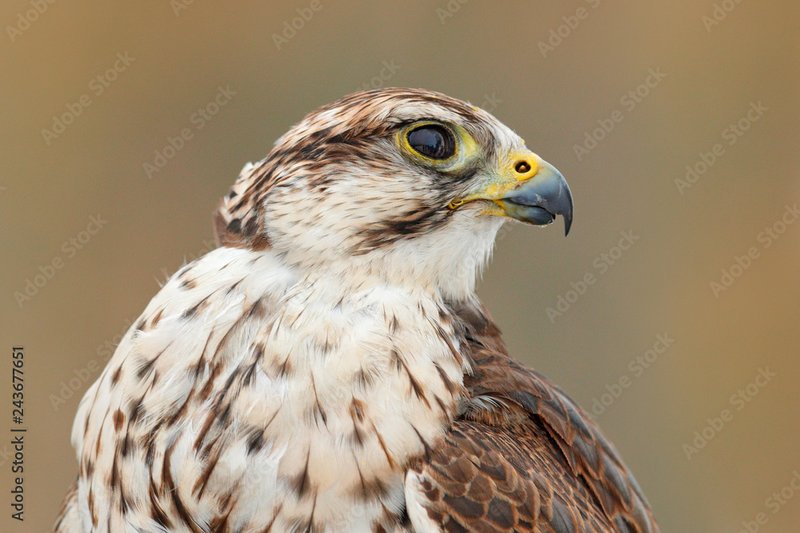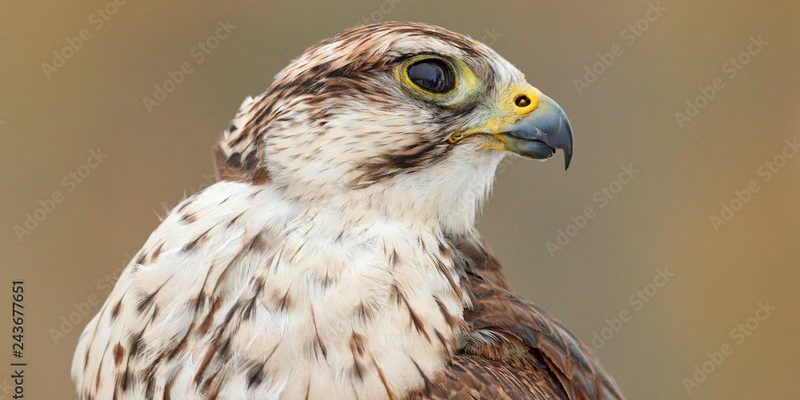
Imagine a puzzle; each piece represents a part of nature. The Saker Falcon is one of those pieces, and without it, the picture of our environment becomes incomplete. Protecting this species isn’t just about the falcon itself—it’s about maintaining balance in our ecosystems. So, let’s explore how these conservation efforts work and the challenges they overcome, much like a team coming together to solve a complex mystery.
Understanding the Saker Falcon’s Habitat
The Saker Falcon thrives in a variety of habitats, mainly across the vast steppes and open landscapes of Europe and Central Asia. These areas provide ample opportunities for hunting, an essential part of the falcon’s survival. Think of it as their favorite restaurant—you know, the kind where the menu is always full of tasty options. The Saker Falcon typically feasts on small mammals, other birds, and even insects.
However, these habitats are rapidly changing. Urban development, agriculture, and climate change are reshaping the land into something unrecognizable, much like trying to cook a favorite recipe with missing ingredients. When their homes disappear, so do the opportunities for these falcons to thrive. Thus, protecting their natural habitats is crucial for their continued existence.
Conservation groups focus on identifying and preserving vital habitats, ensuring these majestic birds have safe places to nest and hunt. They engage in monitoring activities that assess the health of the Saker Falcon’s environment. This is like keeping a close eye on a plant that needs just the right amount of sunlight and water to flourish.
Legal Protections for the Saker Falcon
Laws and regulations play a massive role in conservation. The Saker Falcon is protected under various national and international laws, including the Convention on Migratory Species and the Birds Directive of the European Union. These protections are like a safety net, aiming to keep the falcon from slipping through the cracks of extinction.
However, laws can be tricky. Even with solid legal protections, enforcement can be inconsistent. Imagine having a great warranty on a product but not being able to use it when things go wrong. Conservationists continuously advocate for better enforcement of these laws. They work with governments to improve legislation and ensure the Saker Falcon has the protection it needs in every country it inhabits.
On the ground, this means increasing awareness among local communities about the importance of the Saker Falcon. When people understand why these birds matter, they’re more likely to support conservation efforts. It’s about creating a connection, much like how a friendship grows when we understand each other better.
Community Engagement and Education
Community involvement is crucial for the success of conservation initiatives. By engaging local people, we can foster a sense of ownership and pride regarding the Saker Falcon and its preservation. Imagine being part of a community garden; you’re not just planting seeds, but you’re also nurturing a shared vision for a beautiful space.
Education is a huge part of this. Conservation groups run workshops and programs aimed at helping people understand the role of the Saker Falcon in their ecosystem. They share stories, facts, and figures that highlight the beauty and importance of this bird. It’s about spreading knowledge, much like passing down family recipes that tell a story.
These efforts often involve working with schools to include wildlife education in their curricula. The younger generation learns the value of nature, inspiring them to become future stewards of the environment. It’s a hopeful vision, one where children grow up with a deep respect for these magnificent birds.
Combatting Illegal Hunting and Trade
Illegal hunting poses one of the biggest threats to the Saker Falcon. Poachers often target these birds for their feathers or use them in falconry, disrupting the natural balance in their habitat. Picture a scene where a skilled chef is suddenly stripped of their best tools—that’s what happens when we take these falcons out of the wild.
Conservation efforts are focused on combatting this problem through stricter regulations and enforcement. Organizations work tirelessly to raise awareness about the illegality of hunting these birds. They collaborate with law enforcement to ensure that the laws protecting the Saker Falcon are upheld.
Awareness campaigns are crucial. Through social media, community events, and outreach programs, conservationists aim to educate people about the consequences of illegal hunting. If people understand that their actions can lead to the decline of a species, they’re more likely to think before they act.
Habitat Restoration Projects
Restoration efforts can breathe new life into areas that have been damaged or degraded. Habitat restoration means making sure that the Saker Falcon has access to safe nesting sites and abundant food sources. It’s like rebuilding a home after a storm—it takes time, effort, and community support.
Conservationists often collaborate with local farmers and landowners to implement wildlife-friendly practices. This could mean creating buffer zones, planting native vegetation, or even changing agricultural practices that might harm the falcons’ habitat. Every small change can lead to significant benefits for bird populations.
Monitoring these restoration projects is vital. Conservationists study how these efforts impact the Saker Falcon’s numbers and behavior. For example, if an area shows an increase in nesting success after restoration work, it’s a clear sign that they’re moving in the right direction.
Research and Monitoring of Saker Falcon Populations
Understanding the Saker Falcon’s behavior and population dynamics is essential for effective conservation. Researchers use various methods, from satellite tracking to field surveys, to gather vital data about these birds. Picture a detective piecing together clues to solve a mystery; that’s what biologists are doing to understand the Saker Falcon.
Through ongoing research, scientists can identify trends in the population, such as migration patterns and breeding success. This information helps inform conservation strategies, ensuring they’re relevant and effective. For instance, if researchers find that certain regions are critical for breeding, conservationists can focus their efforts there.
Additionally, by sharing findings with local communities and stakeholders, researchers can foster collaboration. This partnership is key, as it allows everyone to work together toward the common goal of preserving the Saker Falcon for future generations.
The Road Ahead for Saker Falcon Conservation
While there are many challenges facing the Saker Falcon, the future isn’t entirely bleak. Thanks to various conservation efforts, awareness is growing, and positive changes are happening. Think of it as a marathon rather than a sprint—progress takes time, but with the right strategies, it can lead to lasting change.
The key lies in collaboration. By bringing together governments, local communities, and conservation organizations, we can create a powerful alliance dedicated to protecting the Saker Falcon. Each effort contributes to the bigger picture, much like individual raindrops coming together to form a river.
In conclusion, the Saker Falcon is more than just a bird; it’s a vital piece of our natural world. Together, through education, legal protections, community involvement, and scientific research, we can give this magnificent creature a fighting chance. Every step we take counts, and with a collective effort, the Saker Falcon’s future can be bright. Let’s rally together—not just for the falcon, but for the health of our planet.

